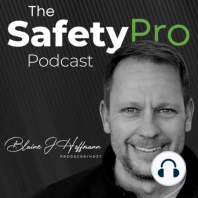15 min listen

063: New Tool to Check for Mold in Your Buildings
063: New Tool to Check for Mold in Your Buildings
ratings:
Length:
23 minutes
Released:
Mar 4, 2019
Format:
Podcast episode
Description
Powered by iReportSource NIOSH developed the Dampness and Mold Assessment Tool for both general buildingsCdc-pdf and schoolsCdc-pdf to help employers identify and assess areas of dampness in buildings. “Implementing regular visual inspections for dampness can help to identify trouble areas before they become major problems and help to prioritize maintenance and repair,” said David Weissman, M.D., director of NIOSH’s Respiratory Health Division. “The Dampness and Mold Assessment Tools provide an inexpensive mechanism to investigate, record, and compare conditions over time.” Office buildings, schools, and other nonindustrial buildings may develop moisture and dampness problems from roof and window leaks, high indoor humidity, and flooding events, among other things. Damp building conditions promote the growth of mold, bacteria, fungi, and insects. Occupants in damp buildings can be exposed to pollutants in the air from biological contaminants and the breakdown of building materials. Research has shown that several health problems are associated with exposure to building dampness and mold, including: Respiratory symptoms (such as in the nose, throat, or lungs) Development or worsening of asthma Hypersensitivity pneumonitis (a rare lung disease in which lungs become inflamed as an allergic reaction to inhaled bacteria, fungi, organic dust, and chemicals) Respiratory infections Allergic rhinitis (often called “hay fever”) Bronchitis Eczema The Dampness and Mold Assessment Tools guide users through assessing all rooms, whether in a school or a general building, for areas of dampness and mold and identifying the source(s) of the dampness and mold. The tools provide an easy-to-use checklist and instructions for assessing and recording any damage that is found and for tracking conditions through time NIOSH previously published an Alert, Preventing Occupational Respiratory Disease from Exposures Caused by Dampness in Office Buildings, Schools, and Other Nonindustrial BuildingsCdc-pdf that provides further information on respiratory disease related to indoor dampness and recommendations for preventing and remediating damp buildings. When workers suspect their health problems are caused by exposure to building-related dampness or mold, workers should report new, persistent, or worsening symptoms, particularly those with a work-related pattern, to their personal physician and, as instructed by their employer, to a designated individual at their workplace. You can find more information about dampness and mold in buildings, including action steps for management and building owners and workers, on the NIOSH website. NIOSH is the federal institute that conducts research and makes recommendations for preventing work-related injuries and illnesses. More information about NIOSH can be found at www.cdc.gov/niosh/. Let me know what you think. Send an email to info@thesafetypropodcast.com and share with me your thoughts about indoor air quality. Also, it would mean a lot to me if you could tell a friend or colleague about the podcast. You can find me on LinkedIn! Post a LinkedIn update, letting me know what you think of the podcast. Be sure to @ mention Blaine J. Hoffmann or The SafetyPro Podcast LinkedIn page. You can also find the podcast on Facebook, Instagram, and Twitter!
Released:
Mar 4, 2019
Format:
Podcast episode
Titles in the series (100)
005: Safety Questions from Listeners: Rail Car Fall Protection| Wheel Chocks | Confined Space Safety by The Safety Pro Podcast